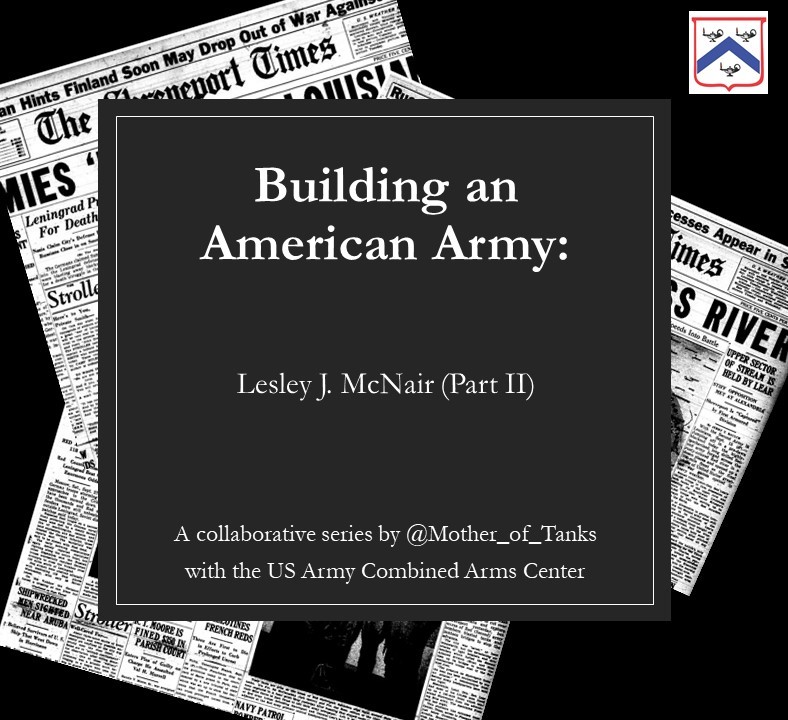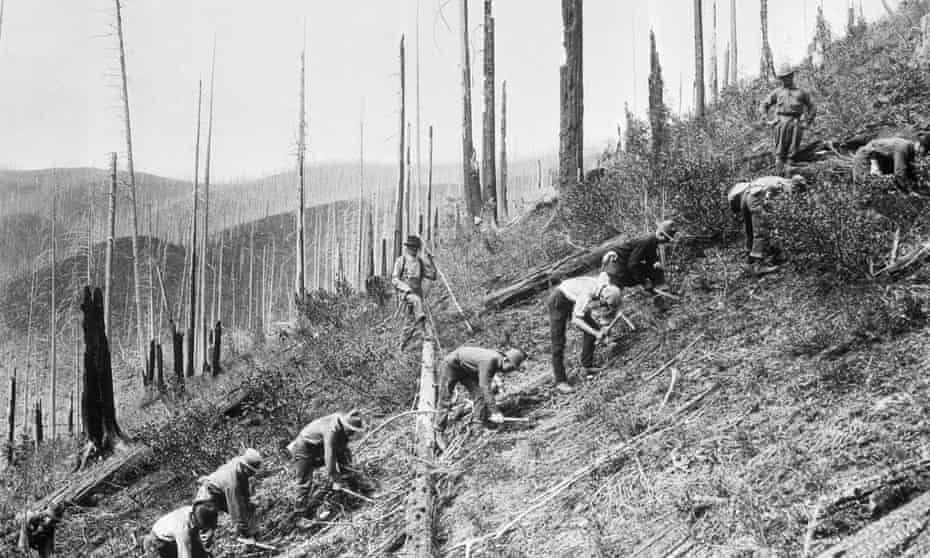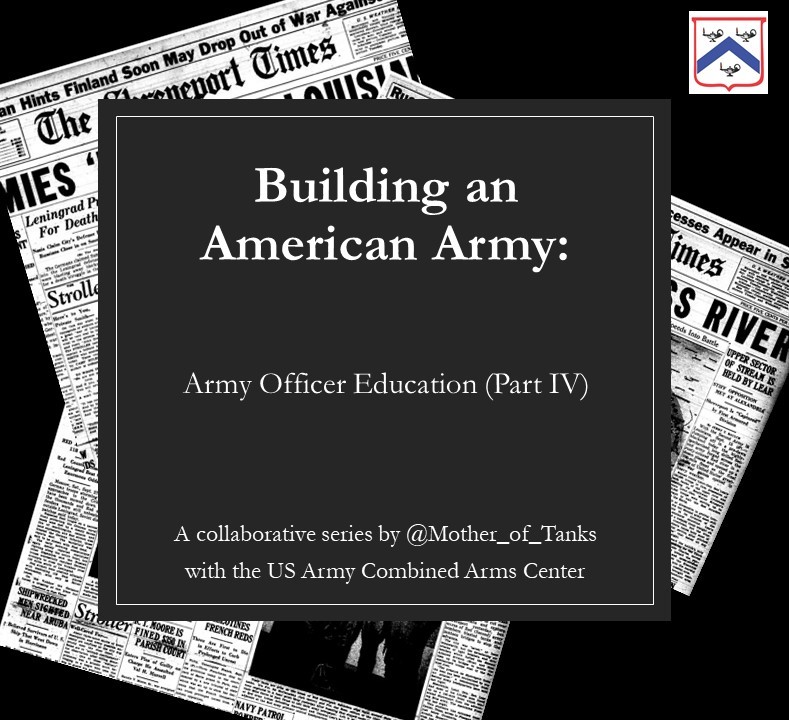
NCOs are the essential link between Army commanders and the men and women serving within their units. 

In order to perform this duty successfully, NCOs must be able to simultaneously provide several key functions – for starters, they must be a capable and effective small unit leader, regardless of whether that unit is combat arms or working administrative duties at a corps HQ. 

They are responsible for knowing their soldiers, and themselves, to help ensure the health and cohesion of the unit. After all, NCOs are expected to take responsibility for how the unit performs. usacac.army.mil/sites/default/… 

NCOs must understand the mission requirements and be able to communicate them clearly to their soldiers. usacac.army.mil/sites/default/… 

They are tactically and technically proficient, and they are capable of mentoring their junior soldiers to help shape them beyond the foundations soldiers develop in Basic Training and Advanced Individual Training (AIT). 

NCOs are responsible for making sure the unit is ready for whatever mission it is tasked. They are also responsible for making sure soldiers are well-versed in Army regulations and standards – 

Things like, making sure their soldiers assemble and don their uniforms properly, understand and observe military traditions and customs, engage in physical training (PT), are proficient marksmen, and so forth. 



NCOs are the “guardians of standards” – it is their responsibility to make sure their soldiers are trained and motivated to perform their duties. They ensure Army standards of training and conduct are adhered to. 

And they are responsible for rewarding and, when necessary, correcting or punishing in a fair and just manner. armyupress.army.mil/Journals/NCO-J… 

So, NCOs serve as small unit leaders, they train their solders, and they are the guardians of @USArmy standards. 

These responsibilities have long comprised the daily lives of the Non-Commissioned Officers throughout the service. And these are what make the NCOs the “backbone” of the @USArmy. 

As tactics changed with advances in weaponry, the role of NCOs in Army formations also changed. For example, machine guns and mortars saw the fire team develop into a distinct unit and formations grew a bit more complex. 



When we entered into World War I, trench warfare brought additional responsibilities to NCOs – controlling fire from trench lines and leading patrols to scout enemy positions and take prisoners. These NCOs became known as Platoon Sergeants. 

Platoon Sergeants serve as the go-between for the squad leaders and the First Sergeant. The Platoon Sergeant is usually a Sergeant First Class (SFC) or E-7 in the @USArmy 

With 7+ years in service, the Platoon Sergeants also become responsible for helping shape, advise, and assist the Platoon Leaders. Platoon Leaders (PL) are typically Lieutenants who, if not prior service, may have 0-3 years in service at this time. 

WWI also saw the development of “technical specialists” – NCOs that would supervise soldiers in the growing number of high-tech positions facilitating modern war – mechanics, drivers, radio operators, and more. 

In fact, as technology and weaponry advanced, the NCO Corps saw a split, with some being small unit leaders and others becoming technical specialists. 

By the time we got to World War II, the squad would contain 12 soldiers including two NCOs. And the rapid expansion of the Army, something we’ve discussed throughout this series, placed a new and unique burden on the shoulders of NCOs.
Responsibilities grew more complex. One publication notes that “weapons had developed to such an extent that a squad leader in WWII commended more firepower than an Infantry regiment with attached artillery in the 19th century.” history.army.mil/html/books/070… 

Soldiers that demonstrated skill in small unit leadership were promoted to NCOs, regardless of their time in service, experience, or age. But in general, this proved successful.
There are always more enlisted soldiers in the @USArmy than there are Officers, so a significant number of NCOs are necessary to keep the Army functioning effectively, with good order and discipline. 

As the Army grew for WWI and WWII, the need for NCOs grew with it. Initially some NCOs would remain to train new recruits and conscripts, but they would eventually be needed overseas. To fill the need for training, the Army reverted back to on-the-job-training. 



General concepts have remained the same, which makes it somewhat easier to shift training around like this. NCOs train soldiers and small units to meet the standards that are set by the Officers. Training is conducted on an individual basis and then advances to unit training.
Modern training is different, however, especially with regard to how it is planned, conducted, and evaluated. Planning is conducted in reverse – with the large unit mission established and a Mission Training Plan (MTP) written for each level. army.mil/article/203850…
An MTP explains what the unit will train and how it will train – with a focus on mission essential tasks and individual soldier skills at lower levels so that individual training can be organized most effectively to help develop the technical proficiency of each solider. 

The modern Army training system seems different, but it is based on the older methods that emphasized development of skilled soldiers first, then skilled squads, and then skilled companies, and so forth.
“Collective training builds teams able to accomplish combat missions by coordinating the performance of skilled individuals.”
“An NCO applies collective training when, for example, he teaches and demonstrates the tasks of every soldier in the crew of a 105mm howitzer. The artillery crew’s training does not end when each man has mastered his assigned task, but continues until each can perform all tasks.” 

NCO Professional Development is a continuous process from the moment the solider begins Basic Training and all throughout their career. This effort will affect rank and pay, career management, and education. 

Before WWI, the Army had to first make some changes to incentivize staying in service and becoming an NCO. At the time, the pay increase was barely noticeable from Private to Corporal.
“After the Spanish-American War, the issue of pay became critical. The Army found it had to compete with private industry for skilled personnel. The recruit who had the potential to be an NCO also had the potential to be a factory foreman.” 

“Congress responded with the first Army-wide pay act in nearly 40 years. Under the act of 1908, an Infantry corporal received $21 a month and a private $15.”
Another factor affecting pay was the peacetime pay cuts. Congress would increase military pay to support recruiting during wartime then cut pay when the war was over. During the Great Depression, military and government personnel saw a 15% pay decrease.
This fluctuation in pay, up and then down, was discontinued after World War II. “In 1946 a Corporal’s monthly pay was set at $90, a Private’s at $75. Now the difference between NCOs’ and Privates’ pay was enough to preserve the incentive to seek promotion.”
“And for those who achieved NCO rank, their pay was sufficient for them to support families while following a military career.”’ 

Still, the issues with NCO education persisted long after WWII, with shortages of NCOs worsening during Vietnam.
It would be 1971 before the Army would develop the NCO Education System (NCOES), which would offer educational opportunities to provide NCOs with “more attractive career opportunities while providing the Army with more capable NCOs.” 







If you're just tuning in or you've missed any of the previous threads, you can find them all saved on this
account under ⚡️Moments or with this direct link
twitter.com/i/events/13642…
account under ⚡️Moments or with this direct link
twitter.com/i/events/13642…
• • •
Missing some Tweet in this thread? You can try to
force a refresh





















